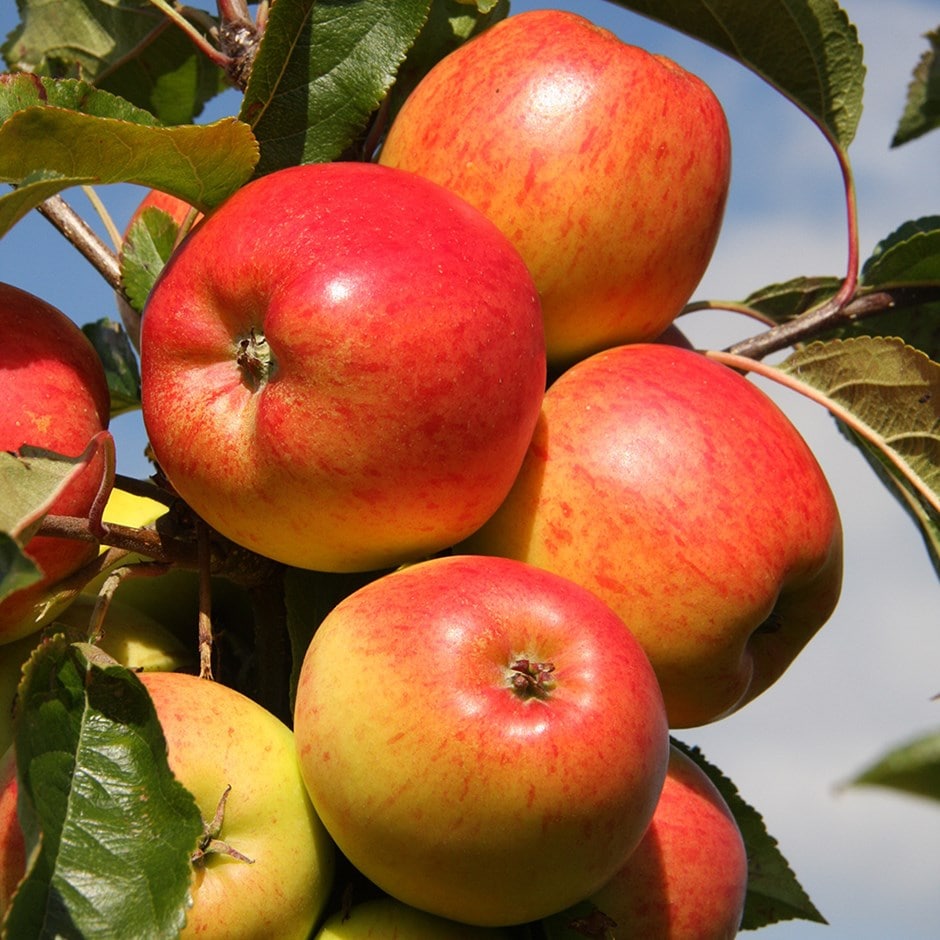apple 'Christmas Pippin' (PBR)
dual purpose eating / cooking
This plant is deciduous so it will lose all its leaves in autumn, then fresh new foliage appears again each spring.
- Position: full sun
- Soil: moderately fertile, moist but well-drained soil
- Rate of growth: average to fast
- Flowering period: April to May
- Hardiness: fully hardy
Hailed as the next leap forward in apple breeding since the introduction of ‘Cox’ cultivars, 'Christmas Pippin' flowers and fruits abundantly, putting on a beautiful blossom display in late spring and early summer, before bearing a bumper crop of delicious dessert apples that will be ready to harvest in early October. The fruits are very sweet with a high, natural sugar content and have a creamy flesh, storing well into the Christmas season.
Pollination information: This apple belongs to pollination group 3, and is not self fertile, so needs a pollinating partner to produce a crop of apples. Cross-pollinate with other apples in this group or those from group or those from group or those from groups 2 or 4, such as ‘Braeburn’ or ‘Cox’s Orange Pippin’.
Pollination information: This apple belongs to pollination group 3, and is not self fertile, so needs a pollinating partner to produce a crop of apples. Cross-pollinate with other apples in this group or those from group or those from group or those from groups 2 or 4, such as ‘Braeburn’ or ‘Cox’s Orange Pippin’.
When planting your apple tree, prepare a hole up to three times the diameter of its root system. Fork over the base of the pit in readiness, incorporating plenty of organic matter into the backfill and planting hole. Avoiding frozen and waterlogged soil, trees should be planted out as they arrive. If you've ordered a bare root tree, soak the roots in a bucket of water for half an hour prior to planting - or if this is not possible, they can be heeled in temporarily, covering their roots with soil, or potted up. Once in the ground, stake firmly and keep the base weed-free. Apply a balanced fertiliser in early spring to support growth and fruiting and provide regular watering during hot, dry spells. The main winter prune, avoiding frosty conditions, involves removing dead, dying, and diseased wood to create an open crown. Additionally, reduce leaders and laterals by a third to establish an airy structure without crisscrossing branches. In August, summer prune by shortening side shoots longer than 20cm (8”) back to three leaves, promoting fruit ripening and encouraging more fruit buds.
Goes well with...
-
apple 'Cox's Orange Pippin' self fertile
eating / dessert apple
11.5 litre pot | M27 root stock | 1.2m
-
Fruit tree protector
2m
-
apple 'Christmas Pippin' (PBR)
dual purpose eating / cooking
11.5 litre pot | M27 root stock | 1.2m
-
apple 'Scrumptious' (PBR)
eating / dessert apple -self fertile
9 litre pot | M26 root stock | 1.2m

